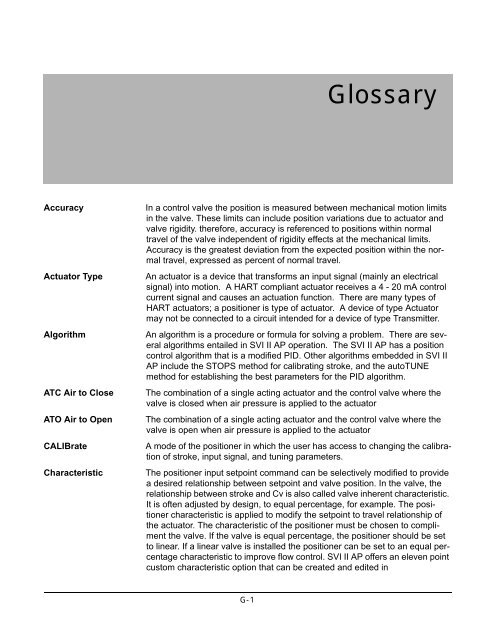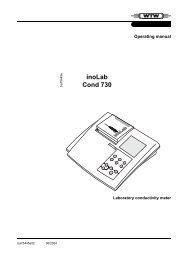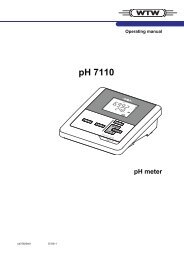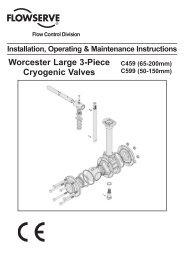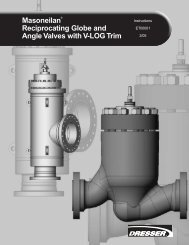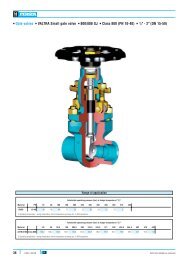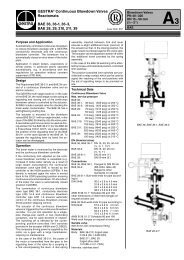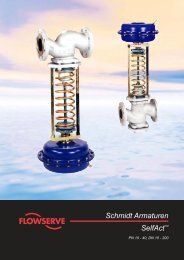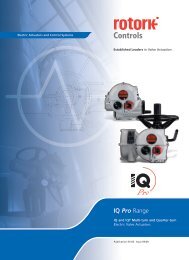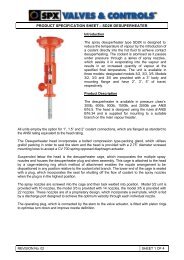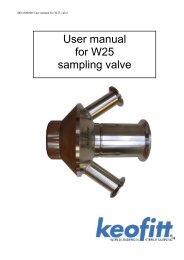SVI-II Instruc Man.book - Fagerberg
SVI-II Instruc Man.book - Fagerberg
SVI-II Instruc Man.book - Fagerberg
You also want an ePaper? Increase the reach of your titles
YUMPU automatically turns print PDFs into web optimized ePapers that Google loves.
Glossary<br />
Accuracy<br />
Actuator Type<br />
Algorithm<br />
ATC Air to Close<br />
ATO Air to Open<br />
CALIBrate<br />
Characteristic<br />
In a control valve the position is measured between mechanical motion limits<br />
in the valve. These limits can include position variations due to actuator and<br />
valve rigidity. therefore, accuracy is referenced to positions within normal<br />
travel of the valve independent of rigidity effects at the mechanical limits.<br />
Accuracy is the greatest deviation from the expected position within the normal<br />
travel, expressed as percent of normal travel.<br />
An actuator is a device that transforms an input signal (mainly an electrical<br />
signal) into motion. A HART compliant actuator receives a 4 - 20 mA control<br />
current signal and causes an actuation function. There are many types of<br />
HART actuators; a positioner is type of actuator. A device of type Actuator<br />
may not be connected to a circuit intended for a device of type Transmitter.<br />
An algorithm is a procedure or formula for solving a problem. There are several<br />
algorithms entailed in <strong>SVI</strong> <strong>II</strong> AP operation. The <strong>SVI</strong> <strong>II</strong> AP has a position<br />
control algorithm that is a modified PID. Other algorithms embedded in <strong>SVI</strong> <strong>II</strong><br />
AP include the STOPS method for calibrating stroke, and the autoTUNE<br />
method for establishing the best parameters for the PID algorithm.<br />
The combination of a single acting actuator and the control valve where the<br />
valve is closed when air pressure is applied to the actuator<br />
The combination of a single acting actuator and the control valve where the<br />
valve is open when air pressure is applied to the actuator<br />
A mode of the positioner in which the user has access to changing the calibration<br />
of stroke, input signal, and tuning parameters.<br />
The positioner input setpoint command can be selectively modified to provide<br />
a desired relationship between setpoint and valve position. In the valve, the<br />
relationship between stroke and Cv is also called valve inherent characteristic.<br />
It is often adjusted by design, to equal percentage, for example. The positioner<br />
characteristic is applied to modify the setpoint to travel relationship of<br />
the actuator. The characteristic of the positioner must be chosen to compliment<br />
the valve. If the valve is equal percentage, the positioner should be set<br />
to linear. If a linear valve is installed the positioner can be set to an equal percentage<br />
characteristic to improve flow control. <strong>SVI</strong> <strong>II</strong> AP offers an eleven point<br />
custom characteristic option that can be created and edited in<br />
G-1


